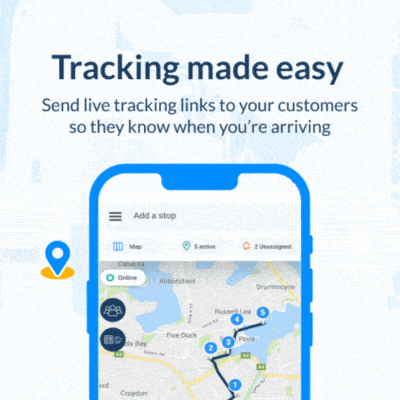Supply chain management is a critical component of the logistics industry, requiring meticulous planning and execution to ensure the smooth flow of goods.
The world has seen that supply chain disruptions can cause chaos in the logistics industry. No matter if you are a trucking company, courier or shipping business, dealing with delays is not easy.
Let’s explore various disruptions that can arise and how as a logistics specialist, you can deal with them.
The Red Sea effect
The Red Sea is a crucial corridor connecting the Mediterranean Sea, the Indian Ocean, and beyond. Its strategic location gives shippers access to Europe, Asia, and Africa. The Red Sea route is the natural sailing route between these regions.
Disruptions in this corridor affect the entire supply chain, highlighting the need for a holistic approach to understanding supply chains in the context of resilience and sustainability.
The maritime crisis that’s erupted on the Red Sea has caused significant challenges for shippers, store owners, and customers who patiently (or rather impatiently) wait for goods to arrive at port.
How can logistics companies deal with supply chain disruptions?
As a shipping company, you must stay informed about the latest developments in the region and work closely with security agencies to mitigate risks.
Effective supply chain management is important for reducing risks associated with recalls and inventory management. Supplier relationship management is also crucial for facilitating effective collaboration with your suppliers, ensuring a resilient supply chain.
- Consider an alternative route: You may want to reroute your cargo around the Cape of Good Hope. But this may lead to longer transit times. Your customers may need stock for their stores, and can’t afford to wait.
- Use airfreight: This transport option is effective for getting cargo to a destination port fast. Although air freight rates are more expensive, when you need stock urgently, air freight is reliable.
- Establish bodies to aid cargo movement: The UK government established the Critical Imports Council to safeguard the flow of goods. Countries can establish similar organizations to assist the logistics and shipping industries in times of disruptions.
7 Effective ways to manage cargo delays and improve supply chain resilience
From my experience in logistics and supply chain operations, planning, and scheduling cargo, I can attest that weather delays are never easy to handle. Managing the flow of goods and information within complex logistics systems, known as supply chain processes, is crucial in these situations.
Even during such delays, you might face additional challenges, such as warehouse capacity issues where your shipment needs to move out to make space for new cargo.
Here are some fast tips for logistics companies to manage cargo delays effectively:
Maintain clear communication
To ensure that customer demand is met, keep all stakeholders informed about potential delays. Timely updates help manage expectations and allow everyone to adjust their plans accordingly.
Use real-time tracking
Utilize real-time tracking technologies to monitor the status of your shipments. This enhances supply chain resilience by enabling businesses to adapt to disruptions and manage vulnerabilities effectively.
This allows you to make informed decisions and provide accurate information to your customers.
Locate2u has software that can assist logistics companies deal with weather challenges. Its route optimization doesn’t just give you the best route. It considers the time of day, weather hazards, roadblocks, and more.
Here’s a scenario: You are a logistics company delivering a parcel, but the weather isn’t cooperating on this particular day.
Your customer can view the live tracking of the delivery and follow its path until it arrives at their doorstep. In the meantime, your customer feels at ease about the entire experience because they can stay in control.
Develop contingency plans
Have alternative plans in place for rerouting shipments or using different transportation modes. Understanding and addressing supply chain risks is crucial for maintaining operational resilience, and flexibility is key to managing unexpected delays.
Optimize warehouse management for better supply chain management
Ensure efficient warehouse operations by implementing a robust warehouse management system that is crucial for effective supply chain management (SCM) and integrates with your manufacturing processes. This can help you quickly reorganize and allocate space when unexpected delays occur.
Utilize temporary storage solutions
Consider temporary storage options such as rented warehouse space or container storage to handle overflow during delays.
Effective supply chain strategies begin with careful planning for the acquisition and utilization of raw materials to optimize manufacturing processes and meet customer demand.
Coordinate with carriers and supply chain professionals
Work closely with your carriers to reschedule pickups and deliveries. Supply chain managers play a crucial role in overseeing these processes, ensuring efficient planning and implementation. Strong relationships with your transportation partners can facilitate smoother adjustments.
Monitor weather patterns
Stay updated on weather forecasts and patterns to anticipate potential delays. Understanding various supply chain models can also aid in planning for such disruptions. Proactive planning can help mitigate the impact of adverse weather conditions.
A multimodal approach to overcome delays
You are a leading logistics provider known for its extensive network and commitment to delivering cargo efficiently. With a diverse clientele, including manufacturers, retailers, and e-commerce platforms.
Effective supply chain management is important for reducing risks associated with recalls and inventory management. You have a client who is a major electronics manufacturer and is expecting a critical shipment of components from Asia to their assembly plant in Europe.
These components are essential for meeting production deadlines for their latest product launch. The original plan involves shipping the components via ocean freight, a cost-effective yet reliable method.
But midway through its sailing, your company receives alarming news: a severe storm has caused significant delays at a major transshipment hub.
The port’s operations are halted, and it is projected to take at least a week before equipment could be restored. This delay threatened to disrupt the entire supply chain, leading to production halts and potential financial losses for the client.
Your company decides to explore alternative transportation options to deal with the delay. Here’s how your company gets into action to solve the problem for your client:
Air freight for critical segments
Recognizing the urgency of the situation, your company arranges for the most critical components to be airlifted directly from the nearest available airport.
While air freight is more expensive than ocean freight, the cost was justified by the need to keep the production line running.
Rail and road integration
For the remaining cargo, your company coordinates with its rail transport partners to secure space on an expedited train route from the port to a major inland distribution center.
This multimodal approach includes a seamless transfer from the train to trucks for the final leg of the journey to the assembly plant.
Real-time tracking and coordination
Throughout the process, your logistics company utilizes advanced tracking and communication technologies to monitor the shipment’s progress in real-time.
This ensured that any further disruptions could be addressed promptly and that the client remains updated on the status of their cargo.
Share this article
About the author
Sharl is a qualified journalist. He has over 10 years’ experience in the media industry, including positions as an editor of a magazine and Business Editor of a daily newspaper. Sharl also has experience in logistics specifically operations, where he worked with global food aid organisations distributing food into Africa. Sharl enjoys writing business stories and human interest pieces.














